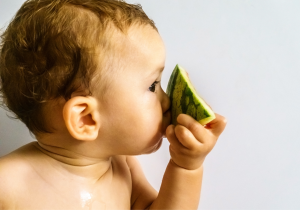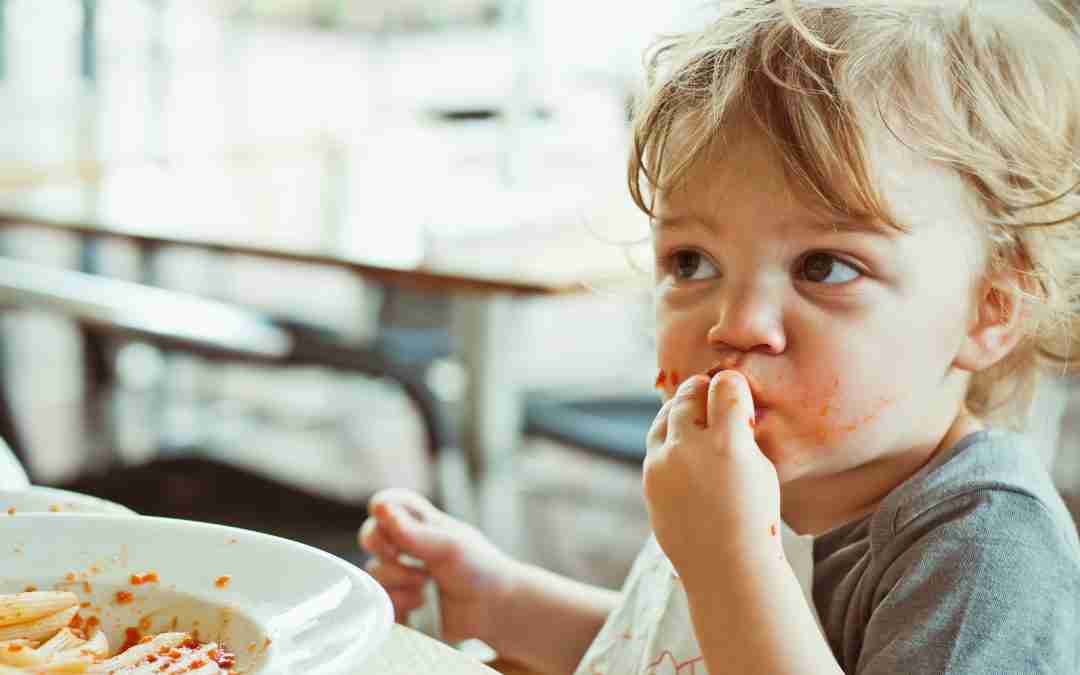If your baby is about 6 months old, it’s probably time to start saying hello to soft foods. Introducing solids to your baby for the first time can seem like a daunting and stressful process, especially when you aren’t sure how to go about the adjustment. Luckily, you can use multiple methods to introduce solids to your baby’s diet smoothly and stress-freely.
When To Introduce Solids
The topic of when to introduce solids to babies is highly debated. Some say you should begin integrating solids at four to six months, but others claim to wait until at least six months.
When to introduce solids is a personal decision, but we’d recommended around 6 months of age and when showing signs of readiness. So before offering your baby bites of solid foods, try to gauge if they are ready to eat solids. How have they developed so far? Can they sit up by themselves, hold their head up, and are they showing interest in foods? If that’s the case, it’s likely that your baby is ready to try solids.

Different Methods of Introducing Solids
There are three main ways to introduce solids into your baby’s diet that you can choose, or you can combine them! These methods include baby-led weaning, spoon-feeding, and combo feeding. Below we will describe each in detail so you can decide which method seems best for your baby.
- Baby-led Weaning
The first method to introduce solids is called baby-led weaning. This method involves entirely skipping spoon-feeding and soft purees and, instead, letting your baby self-feed. Also known as finger food first, this method is perfect for giving your baby a touch of independence and allows them to learn how to eat on their own (with your guidance, of course!).
Baby-led weaning is a fantastic option if you are keen on saving money and skipping the hassle of puree and blended food.
Although baby-led weaning is an excellent option for bringing solids into your baby’s diet, there are a few things to consider:
- Can be cheaper! Your baby will eat what you give them! No more expensive baby food.
- It’s a huge learning process for your baby. Doing so teaches them critical oral motor and sensory skills and independence.
- Introduces them to new textures and flavours, which can lead to less pickiness in the future.
- Your baby can join in on home meals and restaurants with the family!
- It’s fun for the baby! Babies love to touch and discover new things.
- Be prepared for a mess! Self-feeding means complete control of what ends up on the floor as well.
- Gagging is likely to occur. It’s normal for babies to gag and spit out food when first introduced to solids, but this will subside with time. Gagging is a protective reflex, we want them to be able to do this.
- Traditional Weaning
The next option you have for introducing solids to your baby is to start with the traditional method of spoon-feeding. Spoon-feeding is the more typical method of introducing solids to babies, as the parent is in total control. Spoon-feed food is usually some sort of puree or mashed food.



Although spoon-feeding is an excellent option if you’d like to avoid messes and keep control of your baby’s intake, it’s crucial that you introduce finger foods to your baby before the nine-month mark. Your baby is entirely dependent on you when spoon-feeding, so it’s essential that your baby gets the chance to learn about food and textures on their own at some point. It also gives them the opportunity to learn about foods and feel confident to eat!
- The parent is in control of portions/bite sizes.
- A much cleaner method than baby-led weaning.
- It is less time-consuming, as you don’t have to cook anything special for them.
- Your baby is entirely dependent on you. You’ll need to introduce self-feeding by nine months, so they gain independence.
- If they are not offered opportunities to learn about flavour and texture, could lead to picky eating in the future.
- It can be very expensive. This option is the least cost-effective in comparison to the other two methods.
- Your baby may miss out on family meals if fed separately and won’t have the same opportunity to learn by observing the family eat.
- It can be less engaging for your baby. They have no choice in what they eat, and they can’t touch/feel different food textures.
- Combo Feeding
Combo feeding is the third and final way to introduce solid foods into your baby’s diet. Just as it sounds, combo feeding is when you give your baby a mixture of puree baby food by spoon-feeding and finger foods by self-feeding.
The previously listed pros and cons are similar for combo feeding, but this method also has a few other positives and drawbacks.
- It gives your baby independence and allows them to practice eating by themselves.
- It can be less messy than fully self-feeding.
- Your baby can join you for family meals.
- Great for your baby’s development. Babies can get loads of opportunities to practice gross, fine, and oral motor skills.
- It can cause confusion. Your baby might get confused as to why they can eat by themselves sometimes and have to depend on you at other times.
- Parents need to watch for hunger and fullness cues closely. As your baby is dependent on you, they can’t regulate their hunger and fullness.
- Spoon-feeding and self-feeding at once can be messy and take a lot of time.
Overall, how to feed your baby is a personal decision. The experience of introducing solids will vary depending on your situation and preferences. Therefore, it’s essential to choose the most suitable method for you and that you think is best for your baby.
Regardless of the method, you’d like to begin with, remember that giving your baby a chance to self-feed by nine months is crucial. Your baby is developing in this stage of life, so it’s essential to give them the opportunities to explore new foods and textures on their own.
